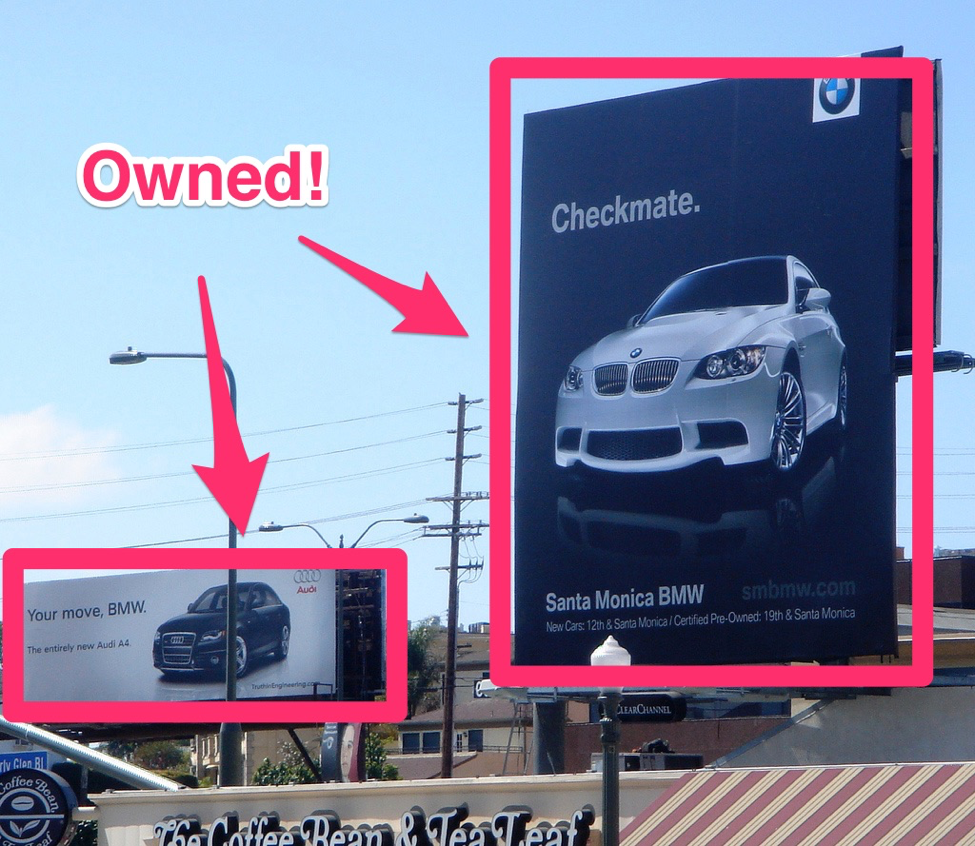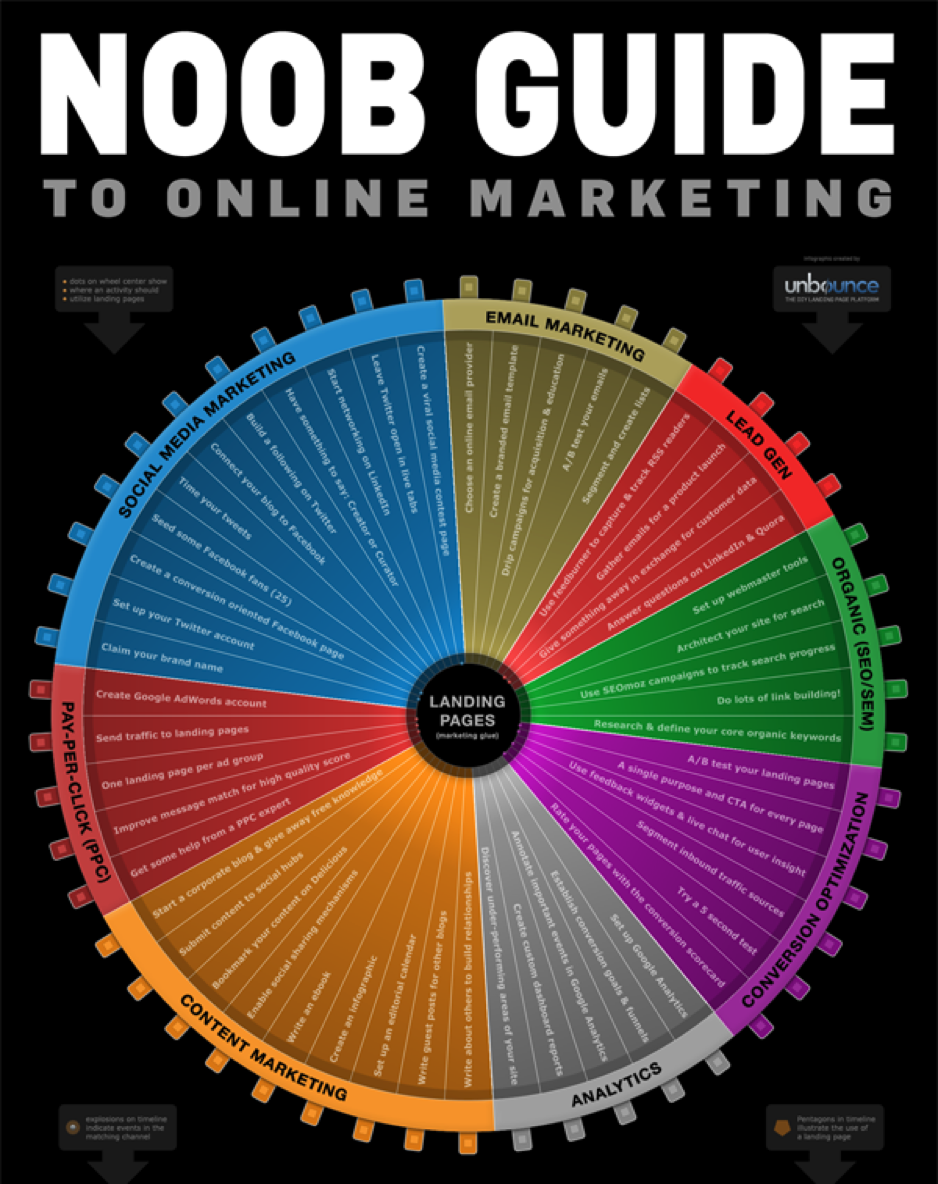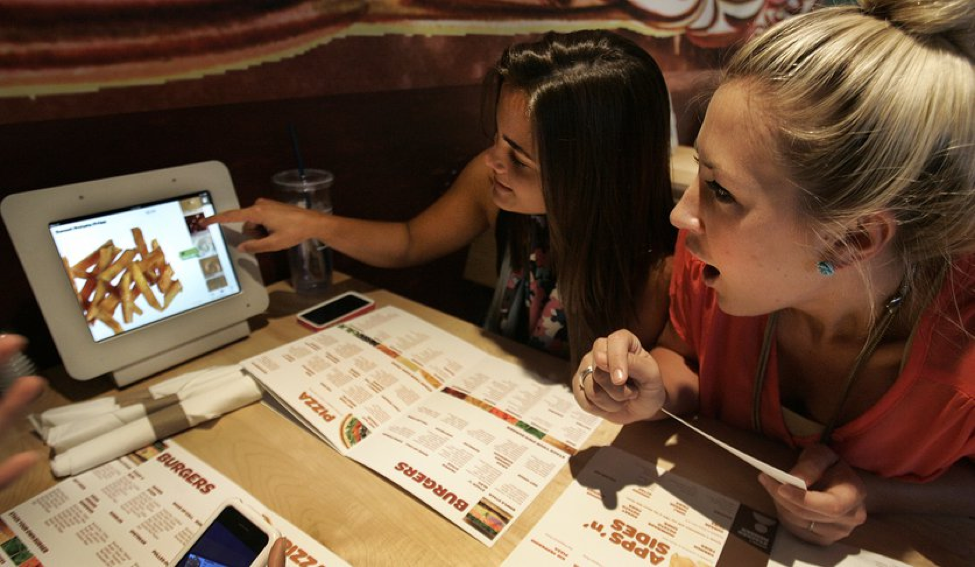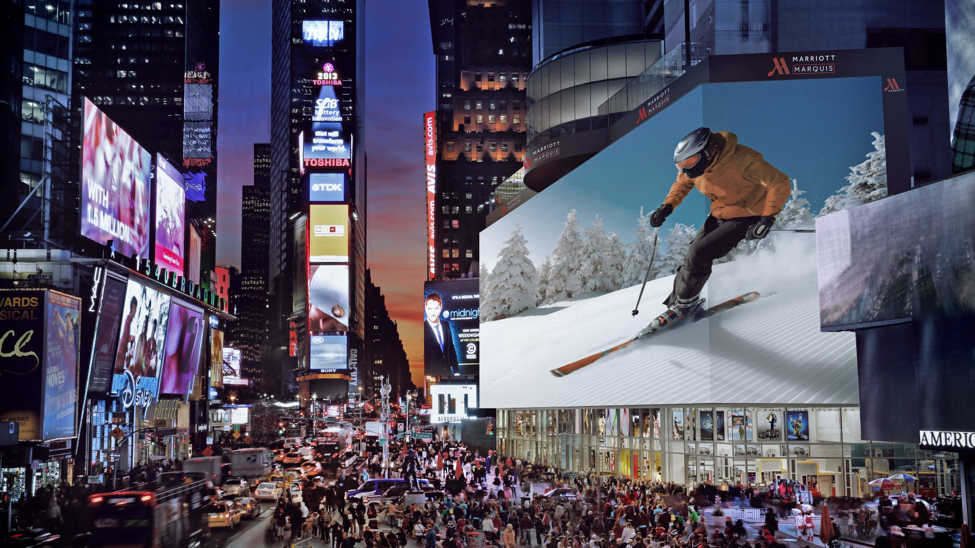Maybe a better question is: what is digital marketing?
This digital marketing guide will show you what’s what.
First popularized as a term in the early 2000’s, digital marketing has actually been around much longer.
Like, WAY longer. About 100 years longer, to be exact.
Here’s a pic of the first digital marketer in history:

(Image source: Wikipedia)
His name: Guglielmo Marconi.
What? Marconi?
Yup. In 1896 he was the first human to demonstrate a, “public transmission of wireless signals.”
This dude invented the radio.
Shortly after his little demonstration in England, morse signals were transmitted across open water.
And, while it would take another 10 years for the radio to reach the general public, it sure didn’t take the creators long to realize they could use it to sell stuff.
The first live broadcast was from an opera performance at the Met and guess what people did after it?
They bought show tickets!
Digital marketing strategy was born.
I bet you’re surprised. I didn’t mention smartphones, apps, Facebook ads or blogs at all.
That’s because digital marketing has nothing to do with the internet.
Definition
If you are wondering what digital marketing is… it’s is advertising delivered through digital channels. Channels such as social media, mobile applications, email, web applications, search engines, websites, or any new digital channel.Or a simpler version…
Digital marketing is any form of marketing products or services that involves electronic devices.
That’s the reason it has been around for decades (because electronics have) and why it doesn’t necessarily have anything to do with content marketing, Google ads, social media or retargeting.
Digital marketing can be done both online and offline.
And, both kinds matter for a well-rounded digital marketing strategy.
Why digital marketing matters
Remember billboards?I do.
As a young kid in California, my experiences from the back seat of our car mostly alternated between: “Mom, when are we there?” and “Uh, look, McDonalds, can we go?”, whenever one of those 10 foot billboards popped up on the side of the road.
Growing up with Indian parents, the answer to both of those would, most times, be the same: “Not yet.”
Sometimes, big brands would even start a billboard war, like this one between Audi and BMW, which got quite a few laughs:

(Image source: BMW blog)
In 2015, a ton of my clients still spent hundreds of millions of dollars on billboard advertising.
Unfortunately or fortunately, it’s dead.
Just think of it this way, Google and Facebook generate more revenue than any traditional media company because they control more eyeballs. That’s why digital marketing matters, it is where the attention is.
Because, frankly, the future of driving will look like this:

(Image source: Dullonet)
Not a single passenger will spend their time looking at the road.
Do me a favor, the next time you drive and are giving a friend a ride, take a peek at the passenger seat.
Just for a second.
Even now, chances are they’ll be looking at their phone.
Heck, in a world where 9% of all drivers are on the phone one way or the other (texting or calling), at any given moment during daylight hours, how can we think billboards have a future?
If not even the driver is looking at the road any more, who’s supposed to see those advertisements?
And, that’s not even considering self-driving cars, on which both Apple and Google are working (you know it’s going to happen).
Elon Musk suggests that they’ll be here around 2020. That’s in only a few years.
That means you don’t have much time to figure out this digital marketing stuff before you can power down your old school printing press and close up shop.
The share of people spending more time using electronic devices is only going up from here.
With Americans spending 11+ hours on electronic devices, every single day, there’s not much left. That is, until we spend ALL of our time in the digital world.
And, while yes, online marketing is the reason that 25 year olds can now sit in their living room and earn 2 million dollars a year playing video games, offline marketing still has its place.
Let’s take a helicopter and circle around to get an overview.
Overview
The 2 main pillars of digital marketing are online marketing and offline marketing. That said, since I’ll talk about online marketing in a separate guide, I’ll only mention the different areas of online marketing here, for the sake of completeness.The 7 big categories of online marketing are:
- Search engine optimization (SEO)
- Search engine marketing (SEM)
- Content marketing
- Social Media Marketing (SMM)
- Pay-per-click advertising (PPC)
- Affiliate marketing
- Email marketing

(Image source: Unbounce)
The beginner’s guide to online marketing, on Quick Sprout, is a great place to get started.
Okay, that said, what other digital marketing is there? There’s plenty, actually.
Here are the 4 big categories of digital offline marketing.
First, there’s what I call enhanced offline marketing. This is a form of marketing that is entirely offline, but enhanced with electronic devices.
For example, if your restaurant uses iPads for your customers to create their orders on, then the offline experience of say, eating Thai food, is enhanced with this electronic device.
People have been using digital media to enhance their marketing for decades (you’ve only forgotten in what ways, as you’ll see).

(Image source: San Diego Tribune)
Next, there’s radio marketing. The next time you hear an annoying, over-enthusiastic car dealer shout every word of his or her commercial, thank Mr. Marconi.
Of course, we can’t forget television marketing. TV ads have been around for more than half a century (and since 1953 also in color, nationwide – Yes, there was a time before color TV).
Finally, the biggest and fastest growing area of offline marketing, with admittedly also a lot of flops, busts and failures: phone marketing.
Let’s look at the 4 areas in more detail.
Enhanced offline marketing
What’s the difference between a billboard somewhere in the desert of Arizona and a billboard in New York City’s Times Square?The size? The product?
3 letters: LED. Light emitting diodes.
All of the billboards in Times Square are electronic!

(Image source: Adweek)
Why? Because in the desert of Arizona, no one’s competing with you for people’s attention. If you have a billboard at all, you win.
But, in Times Square, attention is probably more valuable than anywhere else in the world. Over 330,000 people cross through it each day.
If you want to be distracted, there’s buses, taxis, promoters shouting and then, of course, the electronic billboards.
Some of them are even interactive, showing live feeds of the people on the square or pictures of customers.
Renting a billboard space on Times Square, for a year, will set you back a whopping $1,000,000 to $4,000,000.
Sounds expensive? Wait until you hear the prices for Super Bowl commercials.
What other forms does enhanced offline marketing take?
What do you see when you walk into an Apple Store these days?

(Image source: Wikipedia)
People leaning over iPads, Macbooks and iPhones.
If you have any type of electronic product, any product demo is an important part of your digital marketing strategy.
Okay, the next one’s a good one. If you remember this, you can consider yourself an extremely lucky kid:

(Image source: Emuparadise)
This is a demo disc for the original PlayStation and several of these were handed out with other games or sometimes even magazines.
It was the same with PC magazines. Remember when they came with CDs (and later DVDs) and you couldn’t wait to throw them into your disk drive and see what samples were on them?
A little different than a demo, these are product samples in digital format.
People still do this. Think of all the wannabe rappers or rockers in your hometown, handing out mix tapes and CDs and now probably USB sticks, to get you to listen to their music.
Alright, time to take a look at the category of digital marketing that’s probably been around the longest.
Radio marketing
Over 100 years have passed since that original first live broadcast of the opera performance at the Met and guess what – radio is still here.Since radio did fairly well in transitioning to the internet, it hasn’t taken as big of a hit as TV. And, even old school radio still matters.
Some facts:
- Radio still reaches 85% of the US population every week
- Listeners listen 2 hrs per day, on average
- 40% of all radio advertising expenses worldwide comes from the US
- About half the population of the US listens to internet radio at least once a month
But, aside from creating a kick ass, creative radio commercial that will do well, what else is there?
Recently, internet radio made a good move, doing what most podcasts do: advertise at the beginning of shows.
If you host a show revolving around a certain topic, like coaching, you can plug programs and products in, right before and at the end of the show.
Since social media is the marketing darling these days, it should be fairly easy to find a local radio station, get on a show, be interviewed or negotiate a deal with them.
Once you do, be sure to get some sponsorships, to make sure that you’re a prime candidate for the station and that they give you the premium slot and the best air time possible.
In most cases, doing well on radio means being entertaining.
Cadillac and Dairy Queen are two brands that come up with solid radio commercials on a consistent basis.
You can listen to some examples here.
TV marketing
Television marketing is such a Goliath, it’ll likely never go away. It’s also easily the industry where the most money is burned each year.Ever since Google Video turned into Youtube, the efficiency of TV ads has gone down rapidly.
Who wants to watch a crappy MTV show host review a game that they have no clue about, when they can join 40 million subscribers (!) watching PewDiePie not only rock video games, but also deliver hilarious comments.
All, free of charge, of course.
So, why are TV commercials nearly worthless, when the average American still watches 4 hours of TV each day?
They aren’t specific.
TV ads are unspecific. In a world of search engines, retargeting, social media and email marketing, we are so used to being marketed around products we already care about, that we blatantly ignore everything that’s not remotely relevant to us.
If we can even be bothered to watch a movie on TV, because it’s not yet on Netflix, a company making $5 billion in revenue annually by now, then what do we do?
We record it and we fast forward through all of the commercials.
We’re used to being in total control.
Marketers have to be smarter and smoother.
TV commercials just hit everyone across the board.
You could see a hemorrhoid cream commercial, followed by an Oreo ad and a burger spot, all while being overweight, diabetic and 22 years old.
Such a person would be a horrible target to be viewing these ads. But, with TV, you never know who you’re going to reach, only how many eyeballs you’ll get.
So, apart from a few insomniacs who watch infomercials late at night, ensuring that Dr. Ho still sells a few of his de-compression belts, is TV advertising dead?
Not entirely.
There is still one type of TV ad worth running, but it’ll cost ya.
Remember I mentioned that renting a billboard in Times Square, for a year, will set you back a million?
A 60 second commercial aired during the Super Bowl costs $4.5 million.
Thanks to their cross-pollinating effect, the often viral and memorable commercials still pay for themselves.
Roughly 10% of all TV commercial-related shares on social media come from Super Bowl ads. So do about 8% of all views on Youtube that go to TV commercial videos.
If your commercial makes it to the blacklist (commercials the network decides can’t be shown on TV), the viral effect is usually even stronger, like this one, from Carl’s Junior, that caused a lot of noise this year:

(damn you, Charlotte McKinney)
Super Bowl commercials have the highest retention rate, as this infographic shows. Over half of the participants who were asked remembered the Budweiser “Puppy Love” commercial.
What’s more, these commercials become online assets, generating millions of views over time, such as the famous Star Wars commercial by Volkswagen, which has generated 62 million views, to date.

(will the force be with him?)
Sadly, the hype of the Super Bowl commercials is probably more of a remnant from a success period that’s about to fade.
The $200 billion that companies still annually spend worldwide on TV commercials is hardly justifiable, as every 10th person in the United States has a Netflix account, with more to come.
TV, in the form as we know it, is going to die and will make way for the more custom-tailored experiences we are already getting used to.
So, if you do plan on doing offline digital marketing, I’d suggest that you spend your time and money focusing on a marketing platform or channel of the future.
Like this one.
Phone marketing
We still don’t realize this or give it nearly enough credit.Smartphones are killing it.
Now, over 80% of internet users own a smartphone and, in 2014, we crossed the tipping point where more people are accessing the internet from their phone than via a desktop PC or laptop.
Mobile marketing is here, and, in 2016, the amount spent on mobile ads will first exceed the amount spent on desktop ads.
In 2020, there will be as much money spent on mobile ads as there is now spent on TV advertising. How’s that for fast growth?
But, before we look at the type of phone marketing that you can do for smartphone users with an internet connection, let’s look at some offline ways to market your products.
There are 2 apps that are grossly underestimated, yet they are on every phone, smart or not:
Calling and texting.
Cold calling is the act of calling a person with no prior contact and trying to sell them something.
While at roughly 3 sales per day (marketers call 52 people a day, on average, with about 17 calls until they find a buyer), it doesn’t have the scalability of social media or email, it’s still a valid approach to marketing.
The tactic works, but doesn’t scale very well when selling to end customers (B2C) and making contact before trying to sell helps to close the deal (especially in B2B, which is all about connections).
What works better is marketing via texting, an “app” that is also available on each and every single phone out there.
Online or offline, a text message is almost a guaranteed read.
While the MMS obviously tanked after the web became available and mobile data usage costs so little, texts are still a good way to reach people and bring value in 160 characters or less.
While you should definitely get permission first, for example, in the form of having your customers text a certain word to a phone number, there are several providers that offer text marketing at scale.
Here are some examples of how you can leverage text message marketing:

(Image source: Tatango)
Special deals, coupons and discounts are a great way for restaurants to get additional customers and turn walk-ins into regulars.
You can see more examples of successful restaurant text messaging campaigns here.
DVD rental service, Red Box, pulled off a successful campaign as well. They let their customers text DEALS to 727272 in exchange for a gamble.
They would receive a random discount on their next rental, between $0.10 and $1.50.
Over only 10 days, they connected with 400,000 customers and generated over 1.5 million text messages.
Using text reminders as customer service can also enhance your mobile marketing, like Walmart does. They alert customers when their prescription is ready for pickup. To date, they’ve sent over 1 billion text reminders.
Another option is to create a loyalty program, where your customers can trade points collected in an app or when paying via their phone. Only 13% of retailers have one, so it’s an option that can help you to stand out.
Since 98% of all text messages are opened, and 90% of them are opened within 3 minutes of arrival, text messages are also a great opportunity to promote a giveaway that you’re doing.
Using a tool, like Heyo, you can easily create a giveaway that’s optimized for mobile and works well on Facebook and other social media platforms, like this one:

However, there is one area of mobile marketing that you should probably avoid: QR codes.
These bar code-like images used to pop up everywhere, a few years ago and while some marketers still swear by them, they’re pretty much dead.

Back in 2011, only about 6% of mobile phone users in the US had scanned a QR code, all year. And, by 2012, 97% of consumers didn’t even know what a QR code was.
While I can’t be 100% sure about why they weren’t the big hit some wanted them to be, I suspect it’s because the system was too complex.
To scan a QR code you’d always have to download a specific app, like Barcoo.
Then, the corresponding content would open within the app, which was often not optimized for mobile.
Big brands also didn’t respect the context of QR codes, putting them in very unfortunate places, like subway stations with no cell reception or on TV commercials, where they were only visible for a few seconds.
So, don’t waste your time with QR codes, your time and money is best spent elsewhere.
Conclusion
That’s the scoop on digital marketing. As you can see, the internet is, by far, not the only place for marketers to gather success, even today.Of course, no one can afford to miss out on the opportunities of the web and, eventually, every marketer will have to master online marketing.
But, employing a few of these offline marketing tactics can help you to not put all of your eggs into one basket and diversify your lead generation beyond social media, content marketing and the like.
Plus the offline and online world is colliding. Traditional devices such as fridges, ovens and even billboards will all be modernized to leverage digital media.
Here’s the breakdown of digital marketing again:
Online marketing
- Search engine optimization (SEO)
- Search engine marketing (SEM)
- Content marketing
- Social Media Marketing (SMM)
- Pay-per-click advertising (PPC)
- Affiliate marketing
- Email marketing
- Enhanced offline marketing
- Electronic billboards
- Digital product demos
- Digital product samples
- Radio marketing
- Radio commercials
- Show sponsoring
- TV marketing
- TV commercials
- Tele-shopping
- Super Bowl commercials
- Phone marketing
- Cold calling
- Text message marketing (giveaways, coupons, loyalty programs)
- QR codes
Will you use any of these tactics in your business?
Which of these do you remember from back in the day. Have I missed any?
Let me know your biggest takeaways in the comments.
General FAQ
What is digital marketing?
Digital marketing is advertising delivered through digital channels. Channels such as social media, mobile applications, email, web applications, search engines, websites, or any new digital channel.
What’s the future of digital marketing?
The offline and online world are colliding. Traditional devices such as fridges, ovens and even billboards will all be modernized to leverage digital media.
Why digital marketing matters?
Google and Facebook generate more revenue than any traditional media company because they control more eyeballs. That’s why digital marketing matters, it is where the attention is.
What channels make up digital marketing?
Search engines, social media, blogs, online ads, affiliate marketing, emails, and mobile apps.


